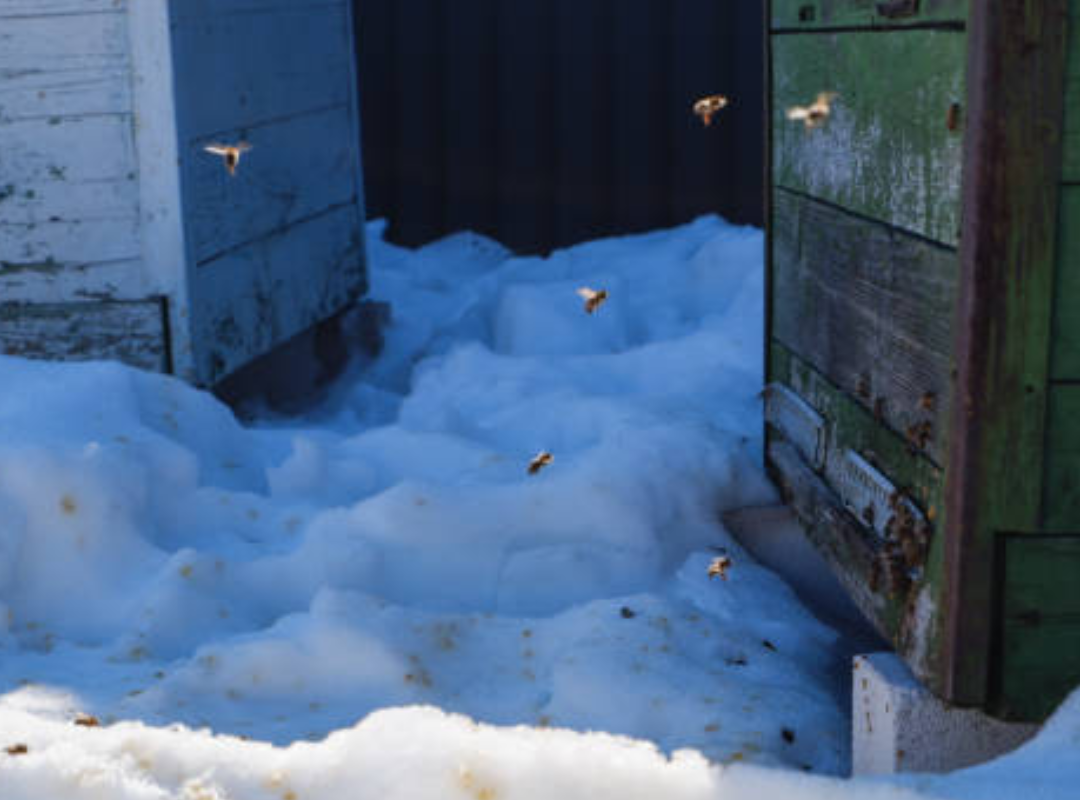As winter approaches and the temperatures drop, it’s common to notice fewer bees buzzing around flowers and gardens. This seasonal disappearance often sparks curiosity—where do bees go during the cold months? While bees are known for their summer activity and pollination work, they exhibit remarkable survival behaviors in winter. Understanding their seasonal routines not only deepens our appreciation of their complex societies but also helps homeowners know what to expect during colder seasons. Whether you’re a nature enthusiast or just want to protect your home, learning what bees do in winter is surprisingly beneficial.
What Happens to Bees When Temperatures Drop?
When the weather starts to cool, bees prepare for survival in ways that vary based on their species. Unlike many insects that hibernate or die off completely, honeybees stay active, just in a different form. Instead of flying around and collecting nectar, they retreat into their hives and begin a process called “clustering.” In this formation, they huddle around the queen and generate warmth by vibrating their wings. This activity helps keep the hive’s core temperature steady even when outside conditions are freezing. So, while it may seem like all bees go away, honeybees are working hard inside their hives to stay alive.
Do All Bees Follow the Same Winter Pattern?
The answer is no—different types of bees adapt to winter in unique ways. While honeybees form heated clusters inside hives, other species like bumblebees and solitary bees follow very different paths. Bumblebee colonies die out in late fall, except for the queen, who hibernates underground until spring. Solitary bees, on the other hand, may overwinter as larvae inside nests made in wood, soil, or plant stems. Knowing how different bees go through winter can help homeowners make better decisions about garden maintenance and pest control. It’s also worth noting that if you encounter an unexpected hive in winter, a bee removal service in Burbank, CA, can ensure it’s handled humanely and safely.
The Role of the Queen Bee During Winter
The queen bee plays a crucial role in the hive’s winter survival. While the worker bees cluster around her to keep her warm, she remains largely inactive, conserving energy and preparing for spring. She doesn’t lay eggs during the coldest months, as resources are scarce. However, her mere presence ensures that the colony stays motivated to protect her and maintain the hive’s temperature. When thinking about where bees go, it’s fascinating to consider how one bee becomes the center of attention and survival for the entire colony during this dormant season.
Why You May Still See Bees in Warm Climates
In areas with milder winters, like parts of Southern California, it’s not unusual to see bees occasionally flying even in the colder months. Some bees may venture out on warm winter days to forage if flowers are blooming. However, this is generally a limited activity. If you’re in a warmer climate and bees go dormant only briefly, you might still find active hives. In such cases, continued vigilance is necessary, especially if hives are located near your home or business. Proper insulation or bee-proofing measures can help avoid potential infestations when spring arrives.
Should You Be Concerned About Winter Bee Activity?
While bees are not aggressive during winter and rarely leave the hive, there are still reasons to be cautious. Occasionally, weakened colonies might abandon hives and relocate to more sheltered areas—sometimes into wall voids, attics, or other structural cavities. This behavior is rare but not impossible, especially in urban settings. Understanding where bees go helps homeowners stay alert to signs of winter infestations, such as soft buzzing noises in walls or ceilings. Being proactive can prevent more complicated issues when the colony becomes fully active again in spring.
How to Prepare Your Property for Winter Bee Behavior
Homeowners who want to avoid unintentional bee habitation should take several winter-proofing steps. Inspect attics, vents, and wall gaps for potential entry points and seal them with appropriate materials. Trim back bushes or trees near structures to reduce access points for foraging bees. If you’re storing firewood or gardening equipment, keep these items elevated and covered to prevent them from becoming nesting sites. Understanding where bees go during the cold season enables property owners to create an environment that’s uninviting to bees without causing harm to these essential pollinators.
How Winter Survival Affects Spring Behavior
What bees do during winter has a direct impact on their spring behavior. For instance, honeybee colonies that successfully cluster and survive the winter will resume their work as temperatures rise, rapidly increasing their population. The queen will start laying eggs again, and worker bees will begin foraging immediately. If the colony struggled during the winter due to disease or lack of food, it might emerge weakened, affecting local pollination efforts. Knowing where bees go and how they survive helps gardeners and farmers anticipate bee activity and prepare for a successful growing season.
Conclusion
While it may seem like bees vanish entirely during the winter months, the truth is much more intricate. From heated clustering in hives to solitary hibernation underground, the strategies bees use for survival are both fascinating and essential to their continued existence. By learning where bees go, you not only gain insight into their seasonal behaviors but also become better equipped to manage your surroundings responsibly. Whether you’re preparing your home for winter or planning for spring garden care, understanding these seasonal patterns is a valuable tool for coexistence with one of nature’s most important species.






